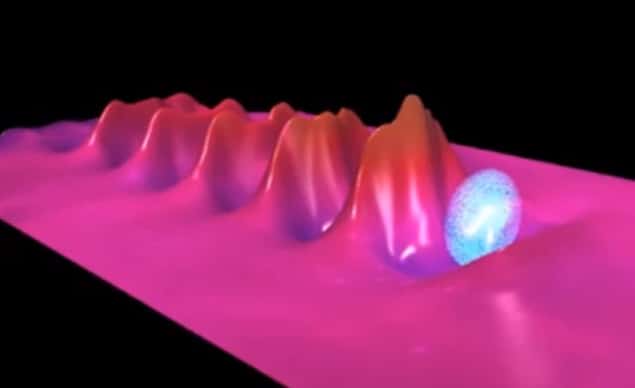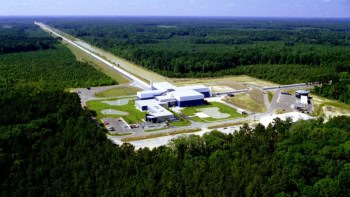
Accelerator physicists in five European countries are developing plans for the world’s first high-energy laser plasma accelerator facility for use by science and industry. If built, the facility will deliver high-quality beams of electrons with energies up to 5 GeV. The EuPRAXIA consortium includes researchers at 16 institutes in the European Union (EU), including the DESY lab in Germany, the Italian National Institute for Nuclear Physics, the French national research council and the Science and Technology Facilities Council in the UK. EuPRAXIA also has 18 associate partners worldwide, including the Lawrence Berkeley National Laboratory (LBNL) in the US, RIKEN in Japan and CERN in Switzerland.
The idea of laser plasma acceleration has been around for more than 30 years, and in 2014 physicists using the LBNL’s Berkeley Lab Laser Accelerator managed to accelerate electrons to energies as high as 4.2 GeV. The process involves firing very intense laser pulses into a gas to create a plasma. As a pulse travels through the gas, it rips electrons away from the positive nuclei, therefore creating a huge electric-field gradient in its wake. This gradient can be thousands of times greater than that found in conventional particle accelerators – and therefore can accelerate electrons to high energies over much shorter distances than conventional facilities.
The result is a compact accelerator that is not much larger than the laser used to create the plasma. That means that a laser plasma accelerator can be housed in a small building, rather than stretching over hundreds of metres or even several kilometres.
High-quality beam
While laser plasma accelerators exist at several laboratories around the world, EuPRAXIA steering-committee member Carsten Welsch says that “no infrastructure exists where the quality of the accelerated beam satisfies the requirements of industry”. Welsch, who is at the UK’s Cockcroft Institute of Accelerator Science and Technology, adds that “creating such a facility would be a major breakthrough and would attract users from many different sectors”.
Welsch told physicsworld.com that an important goal of EuPRAXIA is to develop technology to “sharpen” the energy spectrum of the electron beam produced by laser plasma accelerators. Today’s accelerators produce electrons with a very wide range of energies, and this spread would have to be reduced significantly before a facility could be used as a source of electrons for scientific and industrial applications.
According to Welsch, one important early use of a European laser plasma accelerator would be to create a compact free-electron laser (FEL). FELs use high-energy electrons to produce coherent X-rays, which have a wide range of applications in physics, chemistry, biology and materials science. The European XFEL at DESY in Hamburg, which is currently under construction, has a 3.4 km-long electron accelerator, and the possibility of having much smaller laser-based facilities would be very attractive to science and industry. Welsch describes a laser-driven FEL as a “realistic goal” for EuPRAXIA, and says that high-quality X-ray beams could be created.
Non-destructive testing
Other uses for a laser plasma accelerator include high-resolution radiography, which utilizes pulses of electrons to image the internal structure of an object such as a turbine blade without having to destroy it.
Welsch says that EuPRAXIA will spend the next 3–4 years making a strong case for building a laser plasma accelerator in Europe. This will include beam-dynamics studies and the development of diagnostics to fully characterize all aspects of the plasma and the beam. “Then we will be talking to EU policy makers to get a laser plasma accelerator onto the scientific facility road map,” he adds.
Welsch told physicsworld.com that EuPRAXIA has not proposed possible locations for the facility, but he believes that a number of European countries would be interested in hosting the accelerator.



